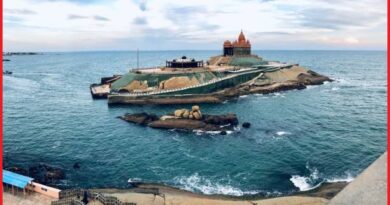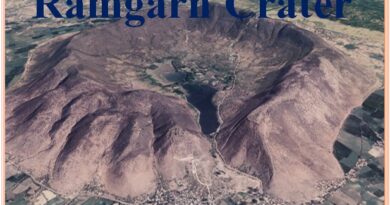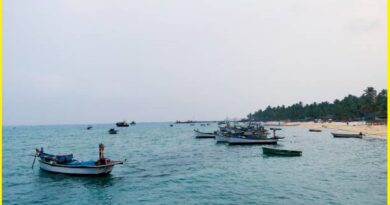An Unusual Historic Shaivite Temple in Chandreh, Sidhi
The Chandreh Temple
The famous and historical sites Chandreh temple is a ancient Shaivite temples are located in Chandreh village of Sidhi district. The temple was established by Prabodh Shiva, the guru of the Chedi rulers in 972 C.E. Chedi rulers belonged to the famous Shaivite sect known Matta-Mayur, for spiritual practice and propagation of Shaivism. The structure and monastery near the temple is a built by sandstone with two ancient Sanskrit inscriptions relating to its construction. There are many temples were established by this sect, in which Kadvaha temple, Ashoknagar and Suravaya temple, Shivpuri are prominent. Chandreh Saiva temple is situated near the confluence of River Son and Banas in Baghelkhand region of northeast Madhya Pradesh. It is situation at a distance of about 10 km from Parsili Resort and surrounded by beautiful natural scenery.
Apart from the main temple, there are also several other small shrines dedicated to different deities like Lord Ganesha and Goddess Durga within the temple complex. The annual festival of Mahashivratri is celebrated with great enthusiasm at the Chandreshwar Mahadev Temple. Near the temple is also the Chandreshwar Mahadev Ashram, a monastery established by Swami Narmadeshwar Maharaj in the early 20th century. The ashram is a peaceful retreat and offers a serene environment for meditation and spiritual practices.
Geography
The Chandreshwar Mahadev Temple is located at the confluence of the River Son and Banas in Sidhi district of Madhya Pradesh, India. The region surrounding the temple is known for its scenic beauty, with lush forests, hills, and rivers. The temple complex itself is surrounded by beautiful natural scenery, with the River Son flowing nearby and the hills in the background.

The temple is situated in the Vindhya Range of hills. The hills in the region are characterized by steep slopes, deep gorges, and narrow valleys, which are a result of the action of the River Son and its tributaries. The rocks in the region include sandstone, shale, limestone, and conglomerate, which were formed due to sediment deposition in ancient seas and river systems.
The temple complex itself is built using locally available materials such as sandstone, which is a common building material in the region. The temple’s foundation is also built on solid bedrock, which provides stability to the structure. The climate in Sidhi district is tropical, with hot summers and cool winters. The best time to visit the temple is during the winter months between October and February, when the weather is pleasant and the surrounding scenery is at its best.
The Monastery and the Temple
The temple complex includes a two-storey monastery made from stone. The site has two Sanskrit inscriptions, that help date this temple to 972 CE. The monastery does include original Hindu iconography such as Ganga, Yamuna, Ganesha and others but in a minimalist style. The Chandreh temple and monastery is an unusual Hindu historic site.

The architecture of the temple is very unique, it is based on a high raised platform and built on a Chaitya like ground plan. The Sikhara of the temple is cylindrical and is well decorated with Chaitya Gavaksha.
The Chandreh temple is made of sandstone. Near to the temple a two storied matha is located. This matha includes many pillars and built on sandstone. Various cells are built inside the Matha. The Garbhagriha of the temple and the outer wall of the Garbhagriha is semicircular. The mandapa of the temple is based on 6 pillars.
Also read- 5 Spectacular Geotourism Destination in Sidhi India
Chandreh Shaiva temple history
The history of the Chandreshwar Mahadev Temple in Sidhi, Madhya Pradesh, can be traced back to the Kalchuri dynasty rulers who was rein in this region in the 9th or 10th century AD. The architecture of the temple is a blend of the Nagara and Dravidian styles.
According to local legends, the temple was built at the spot where Lord Shiva appeared to a devotee named Chandrakar and blessed him with a boon. It is said that Chandrakar had been performing intense penance to please Lord Shiva and was granted a vision of the deity after his prayers were answered.
The Shiva temple of Chandreh is one of the rare examples of a historic circular plan Hindu temple in central India; such historic Hindu temples are far more common in Kerala. It is a Hindu temple with Gavaksha-patterned, perfectly circular Sikhara that reminds one of a ultimate limit in the Sekhari style. The temple is also notable for being a part of Mattamayura sect of Shaiva monastic tradition whose temples and monasteries are found in Kadwaha, Rannod, and Survaya in north Madhya Pradesh.

The Chandreh temple is well preserved and stands on a high jagati (platform). Its plan is so circular that the Mandapa and Sikhara appear to be a yoni and Shiva-linga. The Mandapa pillars and the sanctum doorway are also plain, yet mirror the style of pillars found in the monastery.
Over the centuries, the temple has undergone several renovations and additions, including the construction of small shrines dedicated to other deities within the temple complex. The architecture of the temple is a blend of the Nagara and Dravidian styles. During the British rule, the temple was abandoned and fell into a state of disrepair. However, after India gained independence, efforts were made to restore and revive the temple. Today, the temple is a popular pilgrimage site for Shaivites and attracts devotees from all over India.
How to reach Chandreh Shaiva temple
The nearest airport to Sidhi is the Khajuraho Airport, which is located about 180 km away. From the airport, you can hire a taxi or take a bus to reach the temple. The nearest railway station to Chandreh Temple is the Beohari or Rewa railway station, which is about 30 km and 70 km respectively. The railway station is well-connected to major cities in India, including Delhi, Mumbai, and Kolkata. Chandreh temple is well-connected by road to Parsili resort. You can take a bus or hire a taxi from nearby cities like Jabalpur, Rewa, and Sidhi to reach the temple.




Pingback: The Birth Place of Birbal- Ghoghra Devi Temple Sidhi - Geotourism